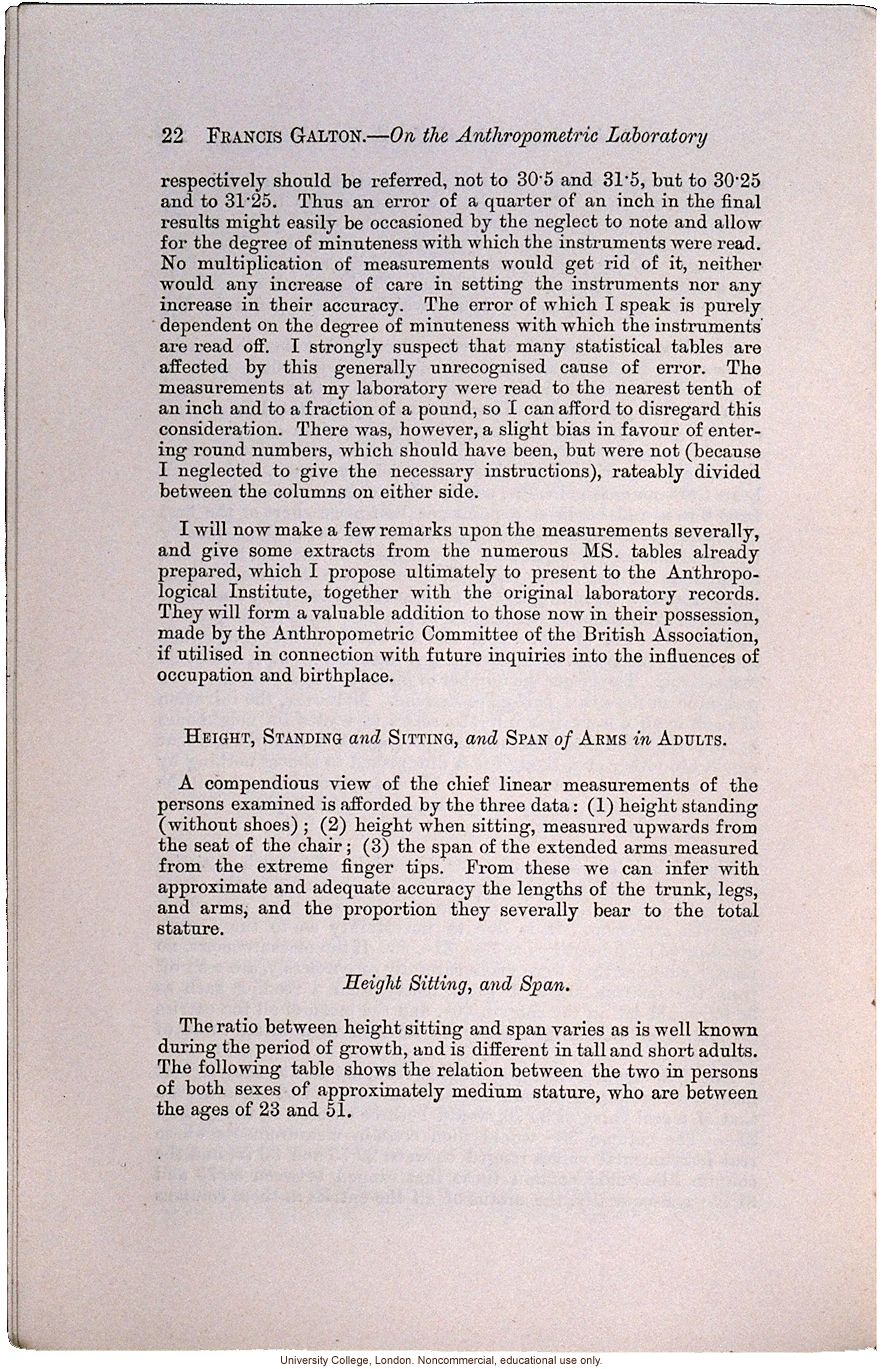22 Francis Galton. - On the Anthropometric Laboratory
respectively should be referred, not to 30.5 or 31.5, but to 30.25 and to 31.25. Thus an error of a quarter of an inch in the final results might easily be occasioned by the neglect to note and allow for the degree of minuteness with which the instruments were read. No multiplication of measurements would get rid of it, neither would any increase of care in setting the instruments nor any increase in their accuracy. The error of which I speak is purely dependent on the degree of minuteness with which the instruments are read off. I strongly suspect that many statistical table are affected by this generally unrecognised cause of error. The measurements at my laboratory were read to the nearest tenth of an inch and to a fraction of a pound, so I can afford to disregard this consideration. There was, however, a slight bias in favour of entering round numbers, which should have been, but were not (because I neglected to give the necessary instructions), rateably divided between the columns on either side.
I will now make a few remarks upon the measurement severally, and give some extracts from the numerous MS. tables already prepared, which I propose ultimately to present to the Anthropological Institute, together with the original laboratory records. They will form a valuable addition to those now in their possession, made by the Anthropometric Committee of the British Association, if utilised in connection with future inquiries into the influences of occupation and birthplace.
Height, Standing and Sitting, and Span of Arms in Adults.
A compendious view of the chief linear measurements of the persons examined is afforded by the three data: (1) height standing (without shoes); (2) height when sitting, measured upwards from the seat of the chair; (3) the span of the extended arms measured from the extreme finger tips. From these we can infer with approximate and adequate accuracy the lengths of the trunk, legs, and arms, and the proportion they severally bear to the total stature.
Height, Sitting, and Span.
The ratio between height sitting and span varies as is well known during the period of growth, and is different in tall and short adults. The following table shows the relation between the two in persons of both sexes of approximately medium stature, who are between the ages of 23 and 51.
[end]


